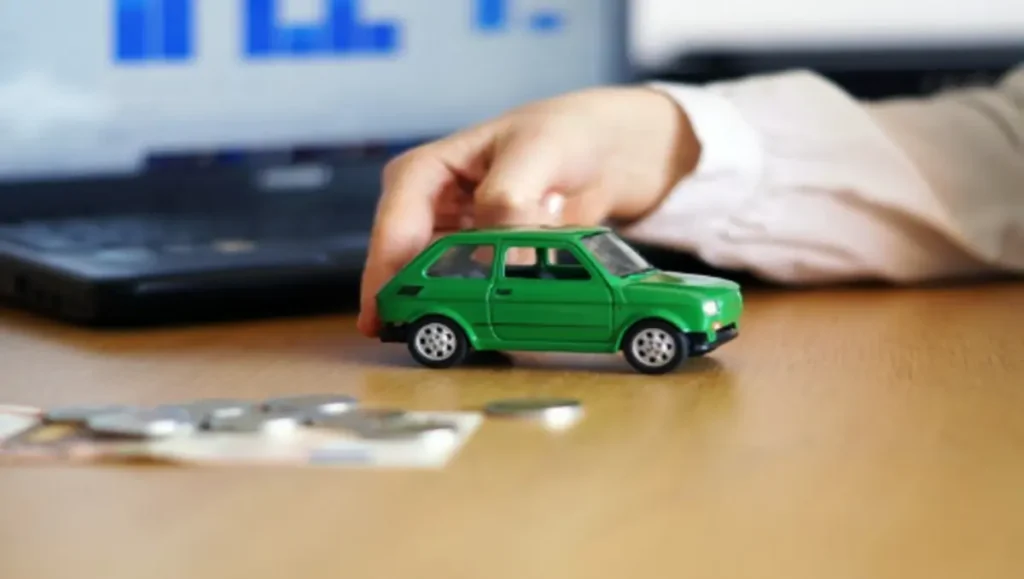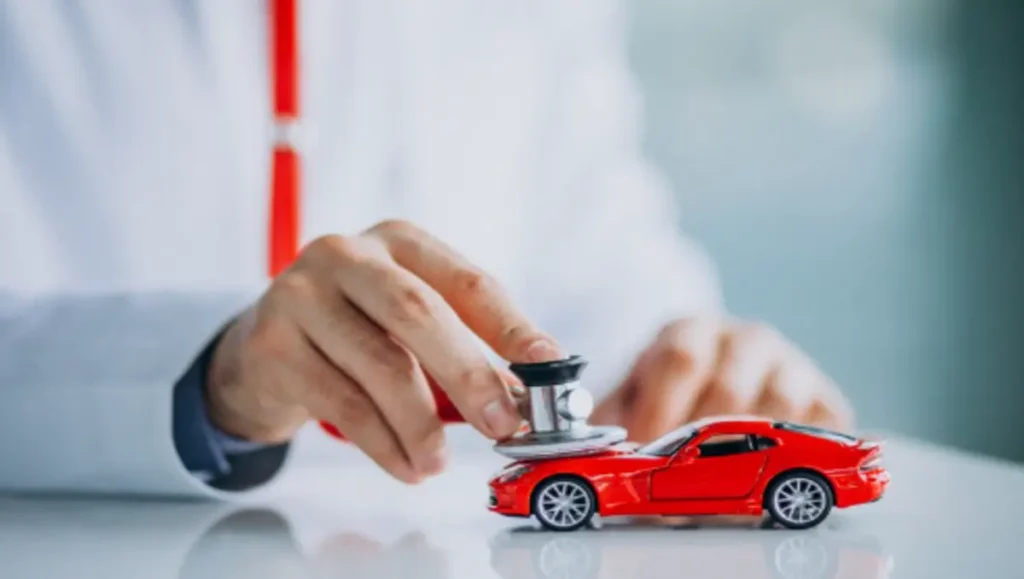Auto insurance is an essential part of car ownership. Whether you’re a first-time driver or an experienced one, understanding auto insurance and selecting the right policy is crucial for both financial security and peace of mind. In this blog, we will explore what auto insurance is, why it’s necessary, the different types of coverage available, and how you can choose the best auto insurance for your needs.
What Exactly is Auto Insurance?
In simple terms, auto insurance is a contract between you and an insurance company that protects you financially in case of an accident, theft, or damage to your vehicle. In exchange for paying regular premiums, the insurance company covers the costs of damages, injuries, or other expenses that occur due to an incident involving your car.
Auto insurance isn’t just about protecting your vehicle — it’s about protecting your financial future. Whether you’re in an accident or face a repair bill, your insurance can minimize the financial burden. In addition, some types of coverage are required by law.
Why Do You Need Auto Insurance?
Many people wonder why they should pay for auto insurance, especially when they’re good drivers or have a reliable car. However, auto insurance is crucial for a few reasons:
- Legal Requirement: In most states and countries, driving without insurance is illegal. Lawmakers want to ensure that drivers are financially capable of covering the costs of accidents, whether they’re at fault or not. Having auto insurance ensures that you’re compliant with the law and can drive legally.
- Financial Protection: Accidents happen, even if you’re a careful driver. The financial consequences of a car accident can be devastating, with repair costs, medical expenses, and legal fees adding up quickly. Auto insurance acts as a safety net, covering the expenses you may not be able to afford out-of-pocket.
- Peace of Mind: No one likes the thought of being involved in a car accident, but knowing you have insurance helps you drive with confidence. Whether it’s a minor fender-bender or a major collision, having the right insurance gives you peace of mind that you won’t be left struggling financially if something goes wrong.
Different Types of Auto Insurance Coverage
Auto insurance comes in various forms, and understanding the types of coverage available will help you decide what’s right for you. Let’s take a look at the most common types of coverage you might need:
1. Liability Insurance
Liability insurance is the most basic and mandatory form of coverage in most places. It covers the costs if you’re responsible for an accident that causes injury or property damage to someone else. There are two main types of liability coverage:
- Bodily Injury Liability: Covers the medical expenses, pain, and suffering of the other party if you’re at fault in an accident.
- Property Damage Liability: Covers the cost of repairing or replacing another person’s property, such as their car, fence, or building.
2. Collision Insurance
Collision insurance covers the repair or replacement of your own vehicle if it’s damaged in an accident. Whether you hit another car, a tree, or a guardrail, collision insurance helps cover the cost of repairing your vehicle, regardless of fault.
3. Comprehensive Insurance
Comprehensive coverage protects your car against events that aren’t collision-related, such as theft, vandalism, or natural disasters. It also covers damages from hitting an animal or from other unforeseen circumstances like a falling tree branch.
4. Personal Injury Protection (PIP)
Personal Injury Protection, or PIP, covers medical expenses and, in some cases, lost wages if you or your passengers are injured in a car accident, no matter who is at fault. PIP is a type of no-fault insurance, meaning it covers your injuries regardless of the accident’s cause.
5. Uninsured/Underinsured Motorist Coverage
If you’re in an accident where the other driver is at fault, but they don’t have insurance (or don’t have enough coverage), uninsured/underinsured motorist coverage helps cover your medical expenses and vehicle repairs. It protects you when the other driver can’t pay for damages.
6. Medical Payments Coverage (MedPay)
MedPay is similar to PIP but generally more limited in its coverage. It helps pay for medical expenses for you and your passengers after an accident, regardless of who’s at fault. MedPay can cover hospital bills, surgeries, or rehabilitation costs.

Factors That Affect Your Auto Insurance Premium
Your auto insurance premium is the amount you pay for coverage, and it can vary depending on several factors. Let’s explore what impacts your rates:
1. Driving Record
Your history behind the wheel plays a big role in determining your premium. If you’ve had accidents or traffic violations in the past, you’ll likely face higher premiums. On the other hand, a clean driving record can lower your rates.
2. Age and Gender
Statistically, younger drivers (especially those under 25) and male drivers tend to have higher accident rates. Therefore, their premiums are usually higher. As you age and gain more experience behind the wheel, your rates will generally go down.
3. Car Type
The make, model, and age of your car can affect your premium. Newer cars or expensive vehicles that are costly to repair or replace are often more expensive to insure. Sports cars and luxury vehicles may also carry higher rates because they’re more likely to be involved in high-risk driving situations.
4. Location
Where you live plays a significant role in how much you pay for auto insurance. High-traffic areas, places prone to theft, or regions with extreme weather conditions (like frequent hailstorms or floods) often result in higher premiums.
5. Coverage Amounts
The more comprehensive your coverage, the higher your premium. If you choose a policy with both collision and comprehensive coverage, your premium will be more expensive than basic liability insurance. That’s why it’s important to evaluate how much coverage you actually need.
6. Credit Score
In many regions, insurers use your credit score as a factor when calculating premiums. Drivers with higher credit scores tend to have lower premiums because they are seen as less risky to insure. Be sure to keep your credit score in check to help keep your premiums affordable.
7. Deductible
Your deductible is the amount you pay out-of-pocket before your insurance kicks in. A higher deductible often means a lower premium, but it also means you’ll pay more upfront if you need to file a claim.
How to Save Money on Auto Insurance
Auto insurance doesn’t have to break the bank. There are several strategies you can use to lower your premium without sacrificing essential coverage. Here are a few tips to help you save:
1. Compare Quotes
Insurance rates can vary significantly from one company to another. Take the time to shop around and get quotes from multiple insurers to ensure you’re getting the best deal. Don’t just settle for the first quote you receive.
2. Bundle Your Policies
If you have other types of insurance, such as homeowners or renters insurance, consider bundling them with your auto insurance. Many insurance companies offer discounts to customers who purchase multiple policies with them.
3. Maintain a Clean Driving Record
Avoid speeding tickets, accidents, and other traffic violations that can increase your insurance rates. A clean driving record over time can significantly reduce your premiums.
4. Choose the Right Coverage
Not everyone needs extensive coverage. If your car is older and has little resale value, you might not need collision or comprehensive coverage. Evaluate your car’s worth and consider whether basic liability insurance is sufficient for your situation.
5. Ask About Discounts
Insurance providers offer a variety of discounts. Some discounts are available for safe driving habits, completing a defensive driving course, having anti-theft devices installed in your car, or even for being a good student. Always ask about any potential discounts that could lower your premium.
6. Increase Your Deductible
If you’re willing to pay a higher deductible, you can lower your monthly premium. However, make sure you have enough savings set aside to cover the deductible if you need to make a claim.
7. Review Your Policy Regularly
Your insurance needs can change over time. Make sure to review your policy annually to ensure it still fits your current situation. As your car depreciates, you may be able to reduce coverage and lower your premiums.

Conclusion:
Auto insurance is essential for protecting both your vehicle and your finances. By understanding the different types of coverage and factors that affect your premiums, you can make an informed decision about the right insurance for your needs.
read more
https://financekhush.com/how-to-start-forex-trading-the-ultimate-guide/
Whether you’re looking for basic liability insurance or comprehensive coverage, the key is to choose a policy that gives you peace of mind without overpaying. By comparing quotes, reviewing your coverage, and looking for discounts, you can secure the right auto insurance that fits both your budget and your lifestyle.
1. What is auto insurance?
Auto insurance is a contract between you and an insurance company that helps pay for damages or injuries that happen in an accident. It can also cover theft, vandalism, or other unexpected events.
2. Why do I need auto insurance?
Auto insurance is required by law in many places, and it helps protect you financially if you’re in an accident. It can cover repairs, medical bills, and legal costs, saving you from big expenses.
3. What is liability insurance?
Liability insurance covers the costs if you’re responsible for an accident. It helps pay for damages to other people’s property or injuries they may have because of the accident.
4. What’s the difference between collision and comprehensive insurance?
- Collision insurance helps repair your car if you’re in an accident, regardless of who is at fault.
- Comprehensive insurance covers non-collision events, like theft, vandalism, or damage from natural disasters.
5. What is personal injury protection (PIP)?
PIP helps pay for medical expenses and sometimes lost wages if you or your passengers are hurt in an accident, regardless of who caused it.
6. Do I need to have full coverage?
Full coverage includes both collision and comprehensive insurance, but it’s not required for everyone. If your car is older or worth less money, you might only need basic liability insurance.
7. How can I lower my car insurance premium?
You can lower your premium by:
- Keeping a clean driving record
- Choosing a higher deductible
- Bundling insurance policies (like home and auto)
- Asking about discounts (safe driver, student, etc.)
8. Does my credit score affect my auto insurance rate?
In many places, your credit score can affect your insurance rate. A better credit score can often lead to a lower premium, as insurers see you as less risky to insure.
9. What is a deductible?
A deductible is the amount of money you pay out-of-pocket before your insurance kicks in. If you choose a higher deductible, your premium may be lower, but you’ll pay more upfront if you make a claim.
10. How do I know if I have enough insurance?
It’s important to evaluate your needs. If you have a newer car or drive frequently, you might need more coverage. If your car is older, you could get by with just basic liability insurance.
11. Is auto insurance the same everywhere?
No, auto insurance requirements and rates vary by location. Different states or countries have different rules about what’s required and how much you’ll pay for coverage.
12. What happens if I don’t have car insurance?
If you don’t have insurance and you’re caught driving, you may face fines, license suspension, or even jail time. Plus, if you cause an accident, you could be responsible for all damages and medical bills out of your own pocket.https://www.youtube.com/










